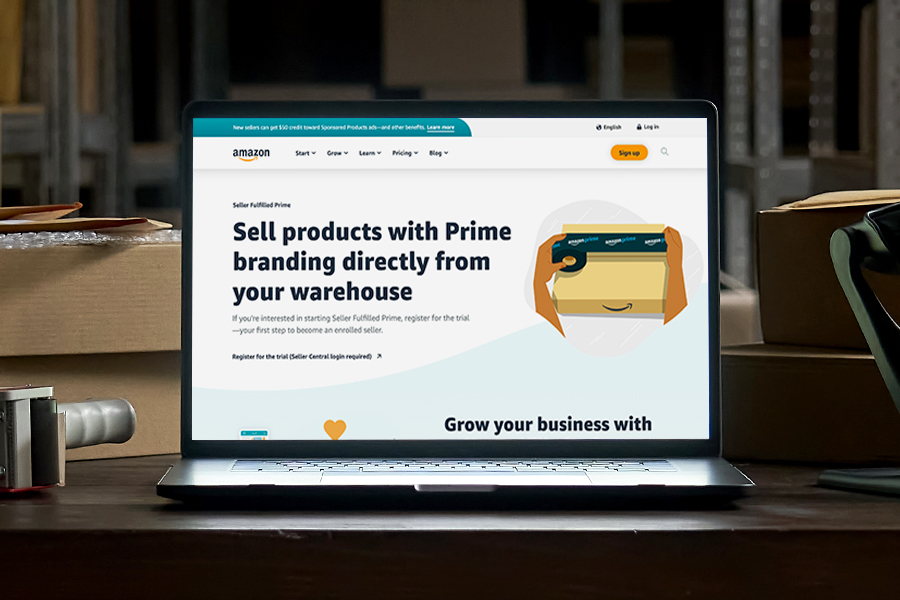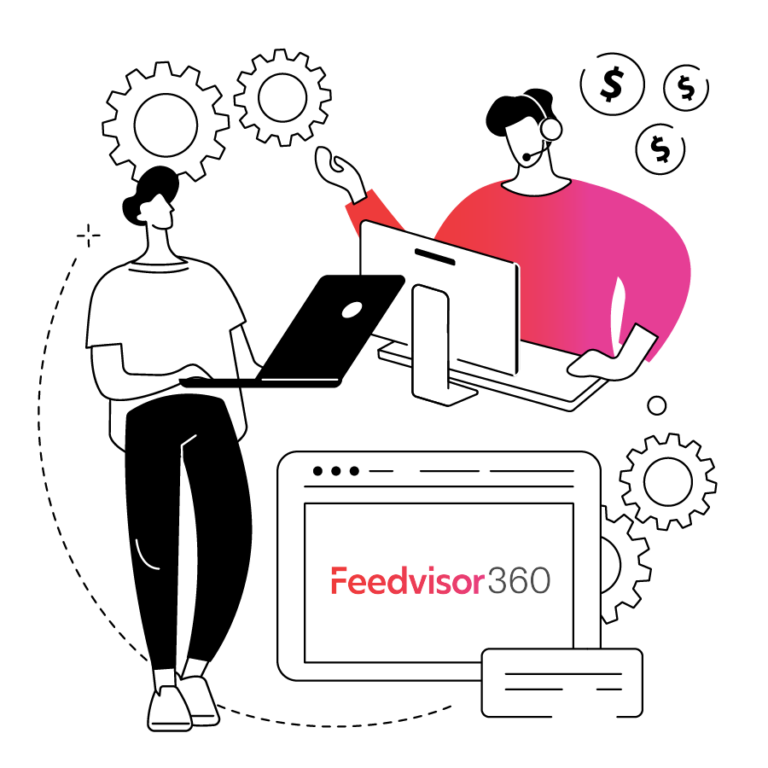Resources - Blog
Seller Fulfilled Prime: What’s Changed and Is It Worth It?

Embarking on the Seller Fulfilled Prime journey has become a complex decision for Amazon sellers, with a recent resurgence of the program after a temporary hiatus. Sellers must now weigh the potential advantages against the heightened expectations and requirements, making the decision to participate in SFP a more nuanced and crucial aspect of their Amazon selling strategy.
We’ll dissect the recent changes to Amazon’s SFP, outlining the pros and cons to help sellers navigate the requirements of the program and make informed decisions for their business.
What Updates Have Been Made to Seller Fulfilled Prime?
Seller Fulfilled Prime, launched in 2015, allows qualified Amazon sellers with Professional seller accounts to display the Amazon Prime badge on orders fulfilled via their own warehouse or third-party logistics providers. Amazon initially paused new seller enrollment in September 2020 as the program did not meet shopper expectations.
Three years later, on October 1, 2023, Amazon resumed enrollment, opening its doors to new sellers once again. Reaching Amazon’s high fulfillment standards appears to be a strong focus with the relaunching of Amazon’s SFP program. Several new updates have been made to the program, which went into effect on the relaunching of Seller Fulfilled Prime to new sellers.
Trial Period
Sellers must prove their ability to meet Prime customers’ service expectations by meeting certain criteria before, during, and after a trial period. The new pre-qualification criteria* are as follows:
- Have a domestic US address as your default shipping address
- Have an Amazon Professional selling account
- Meet the following criteria over the past 90 days:
- Self-fulfilled at least 100 packages
- Cancellation rate less than 2.5%
- Valid tracking rate greater than 95%
- Late shipment rate less than 4%
Sellers wishing to sign up for Seller Fulfilled Prime must complete a trial period to show they’re capable of meeting SFP’s requirements. The Prime badge will NOT be displayed on items enrolled in Seller Fulfilled Prime during this time, however, order processing must still be handled with a zero-day handling time. The criteria to pass the trial period* include:
- Participate for 30 days
- Ship 100 or more packages from Prime trial orders
- An on-time delivery rate of at least 93.5%
- A valid tracking rate of at least 99%
- A seller-initiated cancellation rate of less than 0.5%
- Meet minimum thresholds for one-day and two-day delivery speeds as viewed by Prime customer detail page views
Once the trial period is successfully completed (after a minimum of 100 orders meet the criteria above) sellers will automatically be enrolled into Seller Fulfilled Prime and enrolled ASINs will display the Prime badge to customers. The requirements to maintain Seller Fulfilled Prime status* include:
- Free one-day and two-day delivery for Prime customers
- Free nationwide standard shipping for all customers
- Meet minimum thresholds for one-day and two-day delivery speeds as viewed by Prime customer detail page views
- An on-time delivery rate of at least 93.5%
- A valid tracking rate of at least 99%
- A seller-initiated cancellation rate of less than 0.5%
- Ship and deliver Prime orders on weekends (Saturday, Sunday, or both)
- Offer Free Returns on items weighing under 50 lb
- All post-order customer service inquiries are managed by Amazon
Take note that the previous overall trial period was longer in length and order volumes — sellers would have to fulfill 200 orders in 90 days. Now, sellers must fulfill 100 packages in the last 90 days. However, those who can meet this requirement in a shorter time period can get onto the shorter trial period of 30 days. For some, this is a welcome advantage, as it shortens the time to enrollment. Smaller sellers only capable of carrying out smaller monthly volume orders may miss out on this advantage, though.
Sellers should also note that they now have a three-strike allowance per program requirement. In the past, Amazon would suspend sellers who failed to meet any certain metric. Now, sellers have greater flexibility to address issues. Nevertheless, reaching the three-strike limit necessitates a return to the pre-qualification process, representing a significant reset within the program.
Valid Tracking Rate
Amazon provides its customers tracking numbers for them to be able to see where their order is at. An order has valid tracking if it receives a first carrier scan (the scan that is performed by the carrier to indicate that the order is in transit).
Sellers are now required to provide valid tracking numbers of at least 99.5% across all product categories. Another new change is that Amazon will validate tracking details (including carrier name and tracking ID) for all seller-fulfilled packages and show warnings for invalid tracking details.
Nationwide Delivery Coverage
New for 2024, products across all 3 of Amazon’s size tiers – Standard Sized, Oversized and Extra Large – must be made available in the contiguous U.S. on fast shipping.
When a product is equipped with a Prime shipping template, irrespective of its sizing tier, it is inherently accompanied by a guaranteed minimum delivery speed of 3-5 calendar days. Sellers are unable to modify this default setting.
For sellers, this is a win-lose situation. The Prime badge can now be branded on a wider range of SKUs. However, the minimum delivery speed for all size tiers ranges from 3 to 5 days, including weekends and holidays. In some cases, sellers may need to resort to costly air shipping to ensure timely deliveries.
On-Time Delivery
This is the percentage of orders that buyers received by the estimated delivery date and is based on valid tracking information. A score of less than 93.5%, down from 97% last year, would normally have a strong negative effect on the Buy Box, however there is no penalty for not meeting the performance target at this time.
Sellers now have more flexibility with a reduced fee, dropping from 97% to 93.5%. However, caution is still advised. Amazon is minimizing the use of “Promise Extensions,” where customers are provided a later delivery date to account for logistical challenges. Seller Fulfilled Prime performance metrics will now consider on-time delivery performance with and without promise extensions.
To prepare accordingly, Amazon has encouraged sellers to assess their On-Time Delivery Rate for orders without Promise Extensions to gauge their actual order fulfillment levels.
Having a sophisticated optimization solution like Feedvisor’s award-winning algorithmic repricer is how today’s leading sellers and retailers maintain visibility into these key variables in real time, so they can analyze the data and take automated action that drive results.
How do I Know if Seller Fulfilled Prime is Right for my Business?
Seller Fulfilled Prime comes with both opportunities and challenges. Determining if the program is right for your business means making sure participation is both feasible and cost-effective.
There are many key factors that indicate a business should consider participation in Seller Fulfilled Prime. They include:
-
- Product Demand: While some products move fast, others face slower demand. Those that may be stored for longer are at risk for incurring long-term FBA storage fees.
- Product Specifications: Those selling higher-priced productions that they want to keep an eye on or require specific handling, such as bulky or delicate products that might be more vulnerable to loss or breakage, may want to consider SFP.
- Warehouse and shipping operations: Businesses with established fulfillment capabilities can often meet the rigorous demands for Seller Fulfilled Prime participation, whether that’s an internally-managed warehouse and staff, or an outsourced 3PL.
- Multi-channel marketplaces: Sellers operating on multiple platforms can use FBA, but will face higher fees due to Multi-Channel Fulfillment (MCF).
A key advantage offered by Seller Fulfilled Prime is the ability to sidestep FBA fees. Assessing the expenses linked to internal fulfillment management against the savings gained from avoiding FBA fees is crucial. While participation in Seller Fulfilled Prime may indeed reduce costs per transaction, it’s essential to evaluate whether these savings justify the overall investment.
For instance, smaller companies may find the demands of Seller Fulfilled Prime to be cost and labor-intensive. Although the apparent savings from bypassing FBA fees may initially appear substantial, smaller-scale sellers often lack the capacity to achieve production levels comparable to larger counterparts, making internal fulfillment management challenging. Consequently, for small businesses, opting for FBA services tends to be a more cost-effective choice.
Final Thoughts
Ultimately, the decision to participate in Seller Fulfilled Prime is not just about cost-effectiveness; it’s about strategically aligning with the program’s requirements and leveraging its benefits. Seller Fulfilled Prime, with its recent updates, remains a compelling option, but success lies in a comprehensive understanding of the program and a strategic approach tailored to individual business needs.
Achieving success on Amazon demands not only the right program, but also the right technology, such as Feedvisor’s AI-powered repricer. Our robust algorithmic repricer utilizes real-time data from billions of sources, including advertising data, to adapt swiftly to market dynamics. This empowers your business to thrive, boost Buy Box share, and optimize pricing strategies. Try us free for 14 days to see for yourself.

